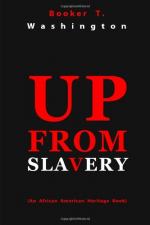
|
| Name: _________________________ | Period: ___________________ |
This test consists of 15 multiple choice questions and 5 short answer questions.
Multiple Choice Questions
1. What do most of the farmers in Tuskegee grow?
(a) Onions.
(b) Cotton.
(c) Wheat.
(d) Corn.
2. The author completes his studies at Hampton Normal and Agricultural Institute:
(a) Owing the school a large sum of money.
(b) In time to attend his sister's wedding.
(c) Even though half the class fails.
(d) With honors.
3. Booker comments that his students at Tuskegee are anxious to learn:
(a) Only the subjects that they find interesting.
(b) Whatever he hands them.
(c) Math, especially calculus.
(d) Only practical subjects.
4. All of Booker's students at Tuskegee are at least:
(a) Ten.
(b) Twenty-one.
(c) Fifteen.
(d) Eighteen.
5. During the winter months, Mrs. Ruffner allows Booker to spend an hour a day doing what?
(a) Taking a lunch break.
(b) Attending school.
(c) Learning to play the piano.
(d) Socializing with friends.
6. To start with, how many students does Booker have at his school in Tuskegee?
(a) Twenty.
(b) Seven.
(c) Sixteen.
(d) Thirty.
7. Why do the blacks at Hampton agree to room with Indians?
(a) To protect the Indians from the outside world.
(b) So that both groups can learn new concepts from each other.
(c) To help the Indians learn English and societal norms.
(d) To express their gratitude for the work the Indians are doing at the school.
8. What do the Hampton night school students earn money for?
(a) To support their families.
(b) To buy their school meals and pay for their rooms.
(c) To put in the bank for when they're out of school.
(d) To help pay for tuition to Hampton's regular school.
9. What do the Hampton night school students do during the day?
(a) Tutor other students.
(b) Learn how to cook.
(c) Take care of their families.
(d) Work.
10. The author tells the story of finding a ten-dollar bill while working at a restaurant. What happens when he shows the money to the proprietor?
(a) A customer tells them it was left as a tip.
(b) Two customers come forward to claim the money.
(c) The proprietor asks his customers who is missing ten dollars.
(d) The proprietor keeps it.
11. What does Booker remark regarding the acceptance of Indians by the blacks at Hampton?
(a) He states that the acceptance is perfectly natural and normal.
(b) He feels there was more tension than there should have been.
(c) He wonders if another race would have been as welcoming.
(d) He says that any other group would have done the same.
12. By saving enough money, who does Booker help send to Hampton Normal and Agricultural Institute?
(a) His sister Amanda and their cousin David.
(b) His brother John and his sister Amanda.
(c) His brother John and their adopted brother James.
(d) His adopted brother James and his cousin David.
13. What project does Booker take over at Hampton?
(a) Overseeing the education of seventy-five Indians.
(b) Hiring Indians to teach at the school.
(c) Hiring Indians to rebuild the school.
(d) Building shelters for seventy-five Indians.
14. Among the unnecessary excesses that he describes for the families of Tuskegee living in poverty, what does Booker include?
(a) Owning books when they can be borrowed from the library instead.
(b) Buying expensive silk ties and dresses that are rarely worn.
(c) Owning an expensive organ that is rarely played.
(d) Serving guests an elaborate meal when a simple one will do.
15. What does Booker note that the people of Tuskegee want from him?
(a) That he teach their children well so they can get out of poverty.
(b) To be a voice for them as he travels from one community to the next.
(c) That he create flexible schedules so the students can work and study.
(d) To have him involved in their local politics.
Short Answer Questions
1. Who joins Booker as co-teacher at his school in Tuskegee?
2. When Booker finally arrives at Hampton and meets the head teacher, what does he tell her?
3. During a fight between blacks and whites, what happens to Mr. Ruffner, the white salt mines owner, when he stands up for the blacks?
4. Booker says that even as a very young child, most of his time is spent:
5. What does Booker comment about the schools in Tuskegee?
|
This section contains 751 words (approx. 3 pages at 300 words per page) |

|




